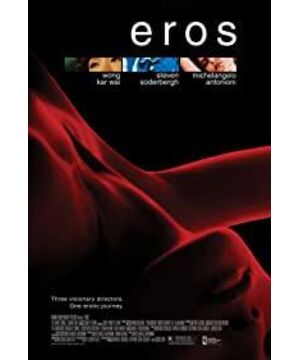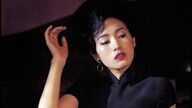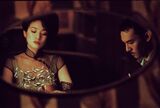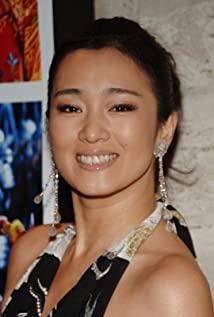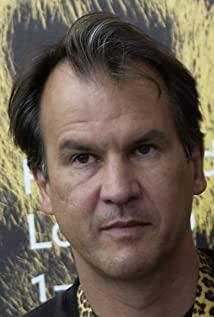"Do you still remember my hand?" It's wonderful to point out the question in just one sentence and connect the plot in series. The film echoes before and after, attracting the audience's attention at the beginning, causing the audience to think, and solving the puzzle at the end, drawing a perfect ending to the film, like a love poem. This hand turned a childish boy into a mature man. This hand became the sustenance in his heart, helping him to become an excellent tailor. This hand was painted for the love that ended before he started. full stop.
The film chooses a high-class prostitute and a tailor as the protagonists, which indicates that this story is destined to be a tragedy. The story is very simple, but how to tell this tragedy in a moving and extraordinary way. Wong Kar-wai has always been good at controlling the camera and handling details, so the film did not let the tailor express his love directly to the prostitute, but indirectly showed the secret love of the tailor through shots and small details, which made it easier to move people.
Let’s start from the beginning. Before the main film begins, oil paintings are connected in series. Those paintings are brightly colored, with occasional light and dark effects, and a little weird music, which makes the men and women in the paintings seem to come alive. They are in love, lingering, and paired with singing music, which has established the tone of the entire film - love is not perfect, not as imagined, but it is beautiful in people's hearts and worthy of praise.
Metaphor is a very important part of the film. The film uses two objects to express the psychology of the hero and heroine respectively - the mirror expresses the heroine, and the dim light expresses the hero. When the male protagonist and the female protagonist met for the first time, the male protagonist was sitting on a stool outside and waiting. At this time, the camera moved from right to left. There was a mirror on the wall next to the male protagonist, and in the mirror was a dim yellow light. The lamp in the mirror at this time indicates that the two will have an intersection in the next story. Next is the meeting between the two, looking at the male protagonist through the mirror, showing the perspective of the female protagonist, and at this time the lights in the mirror suggest that the male protagonist is controlled by the female protagonist. There are also mirrors and lights in other places in the film. The heroine calls into the mirror. From the beginning, it is inevitable that the relationship will break down later. After the relationship breaks down, she carefully goes to ask old customers, and finally throws the clothes on the mirror, showing that The heroine's situation and psychological changes. The dim light is the male protagonist who dare not speak, the secret love, knowing that the two cannot be together, but still holding on to hope, when he sees the female protagonist and others lingering, he is heartbroken, so he has to be sad alone. The function of this lamp is played very well in one place. The female protagonist leans against the wall half-jokingly and asks the male protagonist to help him find a man. When the male protagonist asks if he can, the lights on the wall follow the female protagonist's movements. It appears and disappears from time to time, showing the mood of the male protagonist at this time-he is looking forward to it faintly, and then the two hugged each other, and the lights enveloped them, becoming more and more bright, showing the inner feelings of the male protagonist at this time. Joy is about to burst. The metaphor of time change is also very good. It does not directly show a few months later, a few years later, etc., only through the change of the name and the change of the tone and attitude of people when they speak, the clothes of the characters, etc. It shows the change of time. is wonderful.
The use of voiceovers also adds a mysterious color to the film. For example, at the beginning, there is only a woman's voice and the upper body of the male protagonist, so that the audience does not understand why, and then wants to continue to see what happened and why they said those words. When the two met for the first time, they did not directly show the love scene between the heroine and the customer, but by filming the voice of the male protagonist when they heard the two outside, which not only showed the story, but also did not appear conventional. And then there was still no filming of the heroine's face. It took about 5 minutes for the heroine to really show her face. This is rare in ordinary films, but Director Wang has been able to keep the audience's curiosity and let her continue The desire to keep watching. Another feature of the film is that it is shot from a peeping perspective, not directly showing the panorama, but shooting a back view and a person's actions, which also fits the theme of the film, the male protagonist's secret love.
There are only two background music used in the feature film, one is the music with a big Shanghai feeling, and the other is the music played by the violin. The previous one has been used many times and placed in different scenes. This move is rare and bold, but it is very successful in this film. It is endowed with different meanings according to the heroine's mood, which also makes the audience feel The heroine's "high-spirited" and sad. The latter piece of music makes the audience feel the inner world of the male protagonist.
There are many other places to interpret this film, so I won't list them all here. One of the reasons for the success of this film is that the director has an accurate grasp of the inner world of the characters, coupled with the performances of Gong Li and Zhang Zhen, two powerful groups, thus showing the audience a poignant love story.
View more about Eros reviews


